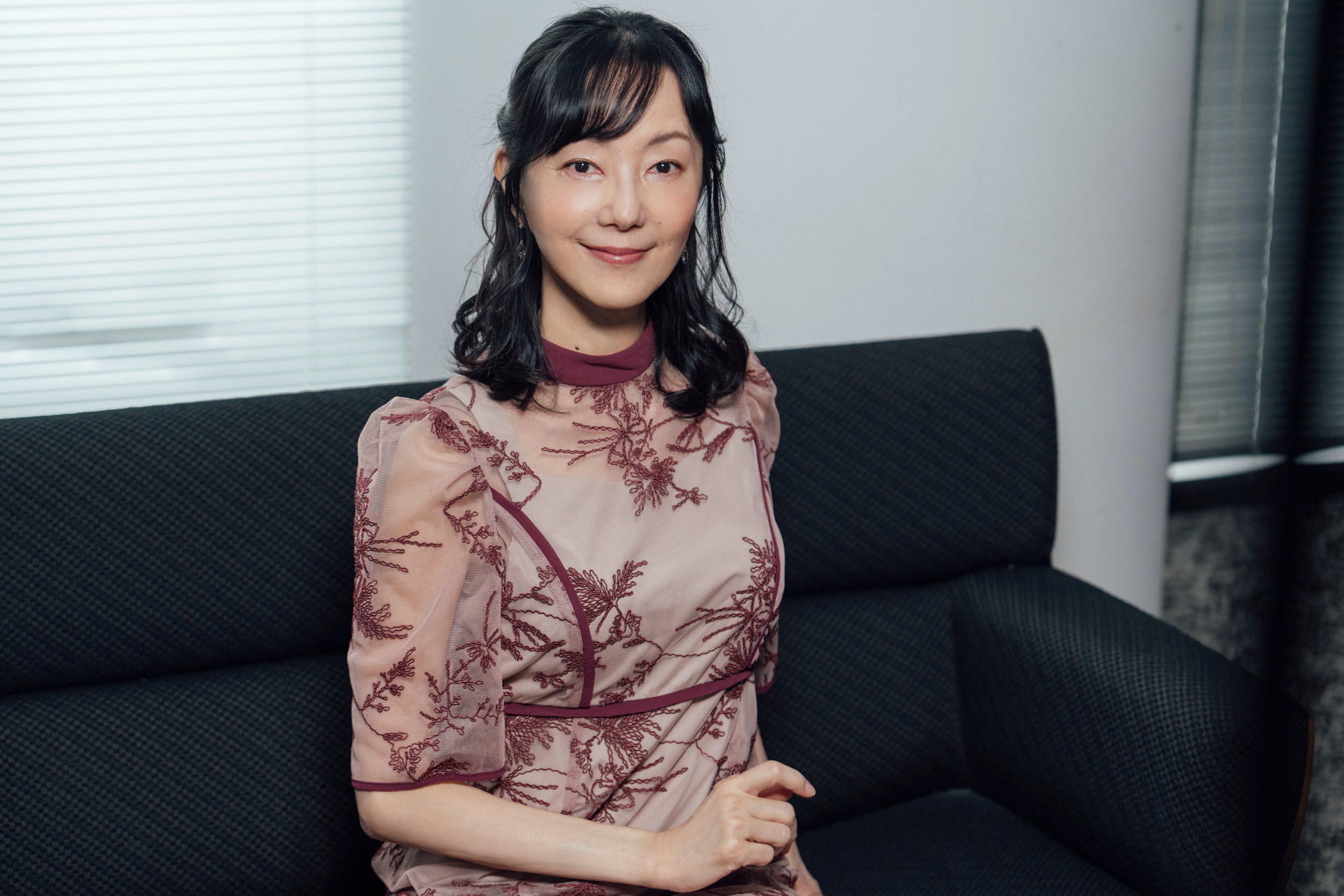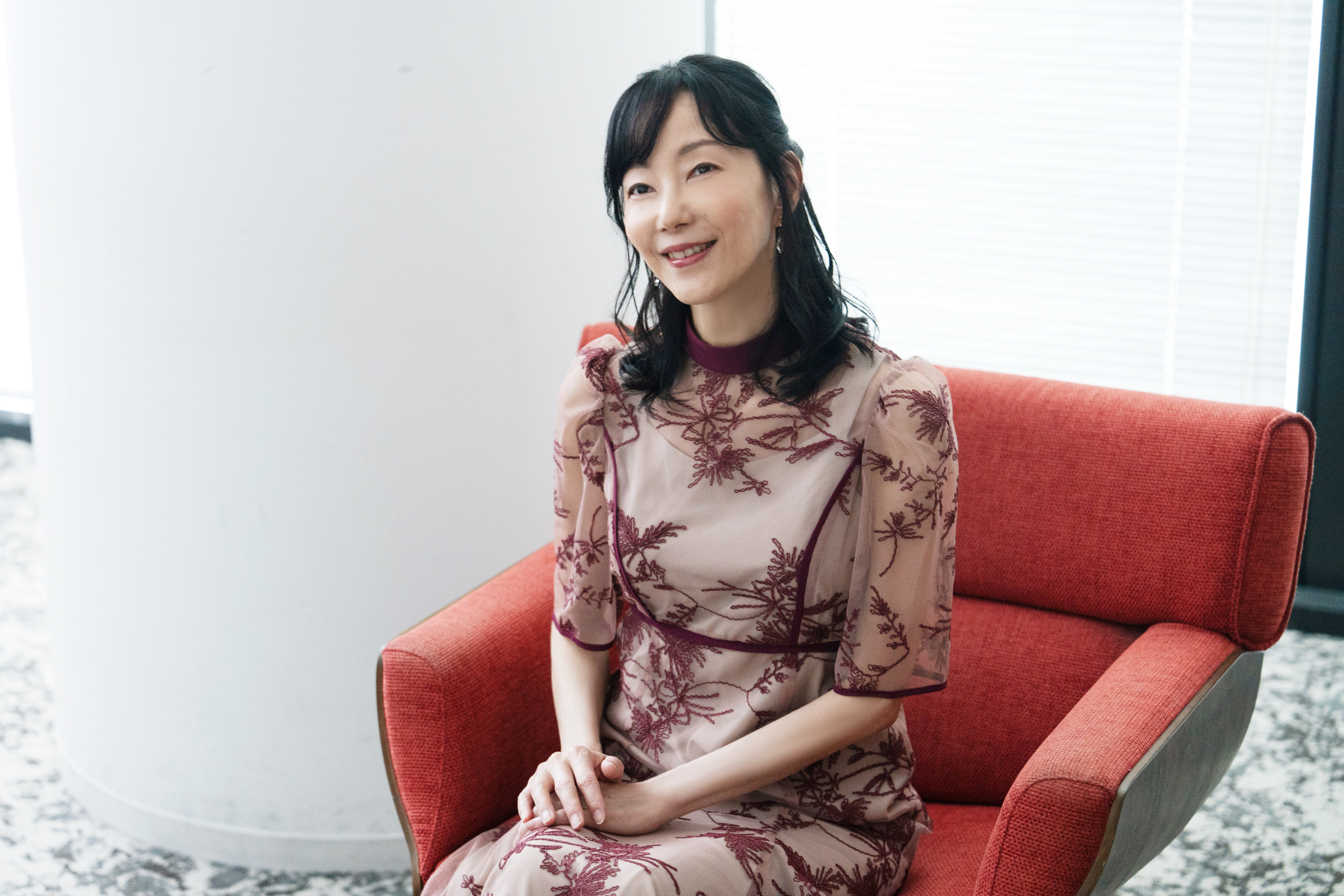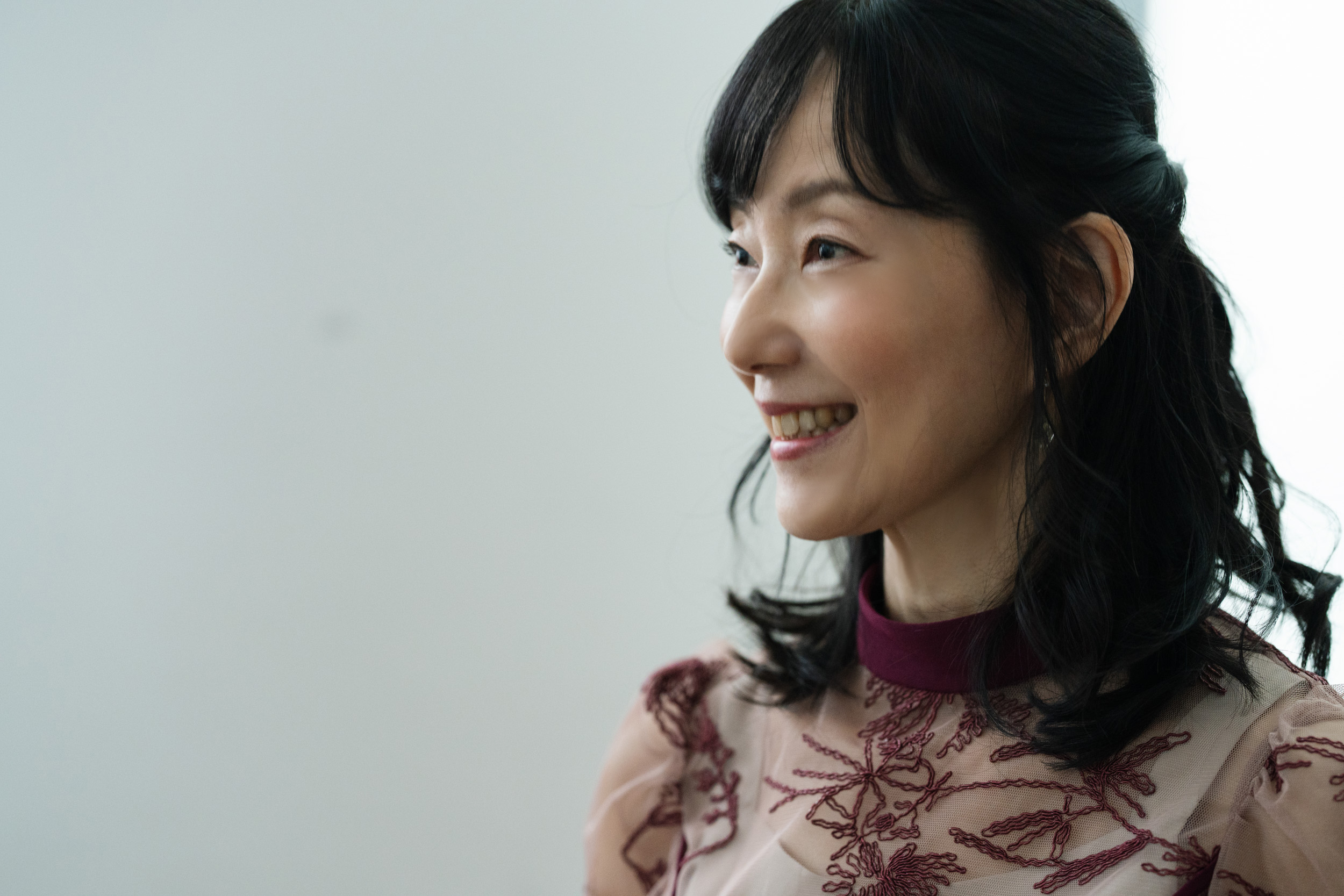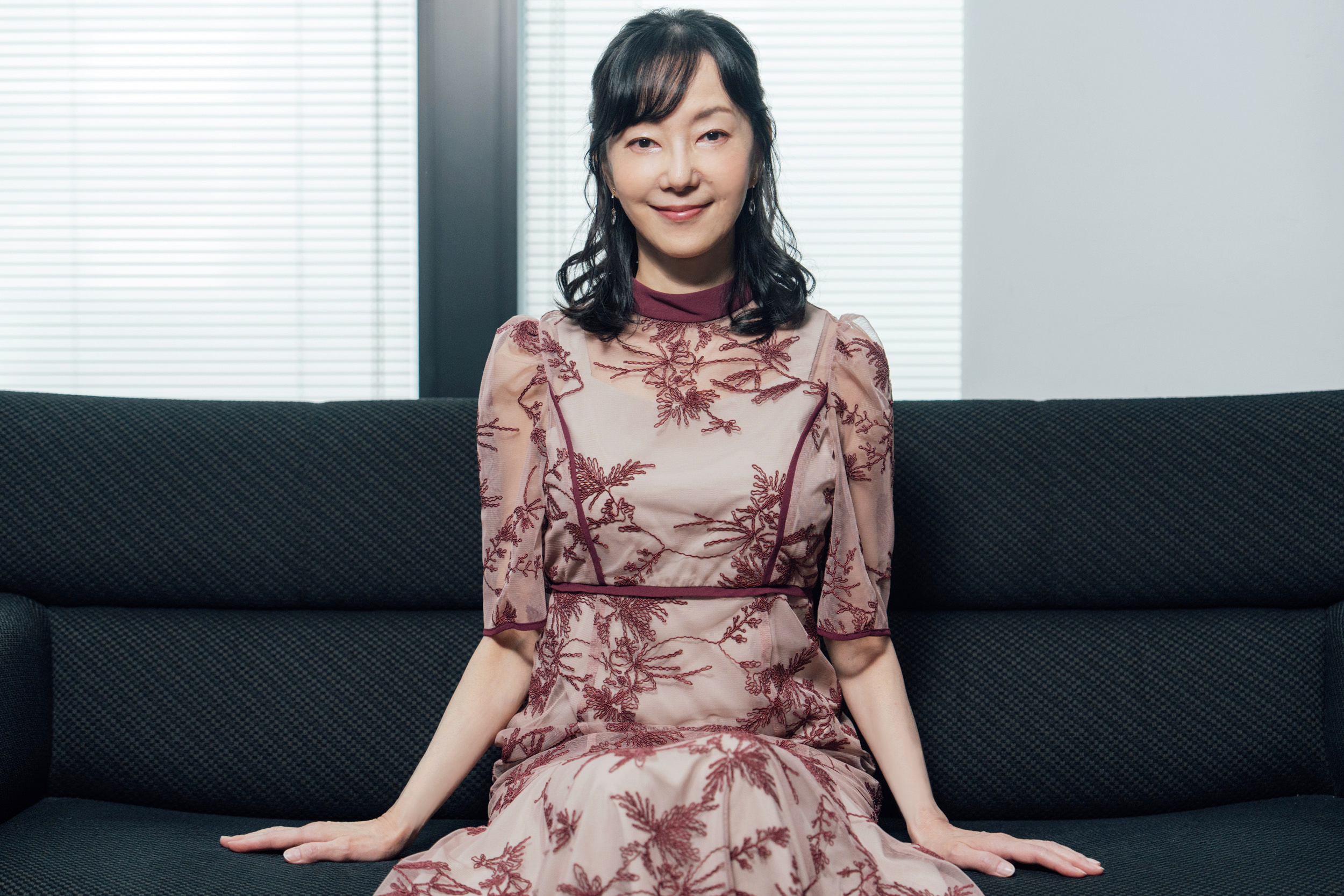
The Essence of Major Motoko Kusanagi From the Perspective of Voice Actor Atsuko Tanaka: Going From an Unknown Being to a United “Partner” With One Heart #02
Text: Satoshi Asahara / Photo: Kazufumi ShimoyashikiIn November 2023, the second restructured feature film version of the Netflix series Ghost in the Shell: SAC_2045 season 2, Ghost in the Shell: SAC_2045 The Last Man, was released. The voice of the main character, Major Motoko Kusanagi, is played by Atsuko Tanaka, affectionately known as “Major” by fans of the work. For more than a quarter of a century, since the 1995 movie Ghost in the Shell, she has been breathing life into the fully prosthetic body of Motoko. How did she interpret the character with many mysterious aspects? We asked her to reflect on the journey with her partner, from the impressions when they first met to the changes they experienced in the latest work.
#02 Atsuko Tanaka, Considering a Prosthetic Body Plan
—Ms. Tanaka, after you met Motoko in 1995’s Ghost in the Shell, what kind of changes did you have in mind for Ghost in the Shell: S.A.C.?
Atsuko Tanaka (“Tanaka”) For the first Ghost in the Shell from 1995, Director Oshii had the image of an “experienced and far-sighted woman,” and I went through trial and error to get her close to that vision. For Ghost in the Shell: S.A.C., Director Kamiyama said he wanted to depict Public Security Section 9 in their younger days, so she is a bit of a hot-blooded person, and I wanted her to be a character who passionately tackles each case. Similar to the detective drama, Taiyo ni Hoero! (Howl at the Sun). It was my first time working with Director Kamiyama, but there was an event where the movie WXIII: Patlabor the Movie 3, in which I appeared, and Mobile Police Patlabor Minimum, which was directed by Kamiyama, were screened at the same time. I had a conversation with him there and got to know his personality, so I think we were able to communicate smoothly in Ghost in the Shell: S.A.C.

—Did you face any new challenges when playing Motoko in the latest Ghost in the Shell: SAC_2045 series for the first time in a while?
Tanaka: The biggest change this time from what we had done before is that now we do 3D computer graphics using motion capture. I approached the recording as if I were dubbing a live-action movie or drama rather than giving a voice to a two-dimensional animation. I think it was the same for the rest of the cast as well. It’s difficult to explain the difference, but in my case, two-dimensional works focus on acting based on information obtained from the script. On the other hand, in live-action movies and dramas, the actors move their bodies to perform actions, and we can get inspiration from the minute changes in their facial expressions, so I take that and incorporate it into my own acting plan. I also took this approach to play Motoko in Ghost in the Shell: SAC_2045.
—Ms. Tanaka, did you update any aspects of Motoko’s character image?
Tanaka: I think there are some parts that I have tweaked to fit the story, but I don’t think the basics have changed. Even in the movie, the role of Motoko as a leader who leads a group of strong men into battle has not changed since Ghost in the Shell (1995). So each time, I have tried to act with the image of a tough and reserved woman who is suitable for that role. However, that doesn’t mean I wasn’t worried about playing Motoko for the first time in a while. Looking back at the final episode of the TV series Ghost in the Shell: S.A.C. 2nd GIG, the members of Public Security Section 9 all join together to “monitor the cherry blossoms 24 hours a day” (a cherry blossom viewing party disguised as a mission), and only Motoko takes a different path from there. The outcome of the “11 individuals” incident was weighing heavily on her mind, and the series ended in a somewhat somber atmosphere. I couldn’t imagine what kind of new story would begin from there, so I went into the recording session nervously, but the first episode of Ghost in the Shell: SAC_2045 started on a bright note. There was a scene where Motoko was drinking beer under the blue sky on the west coast, so I naturally felt radiant.
—Looking back at the journey you have taken with Motoko so far, please tell us about any scenes or lines that you remember in particular.
Tanaka: That has to be the line from the last scene of the latest movie, Ghost in the Shell: SAC_2045 The Last Human. Actually, changes were made to the dialogue for the last episode of the Netflix series, so we re-recorded it.
—I think the ending can be interpreted in many ways, but did you feel any hope in Motoko’s lines?
Tanaka: In any of these series, Motoko is a character who is required to make a big decision at the end. And she herself is someone who can live with either choice, and the same is true this time. They can all become “N” and live in Takashi Shimamura’s ideal world, or they can live in real society. Maybe that’s why I’m being optimistic, but deep down, I think she wants people in the world to be happy, and she’s making choices to make that happen. It is precisely because she wishes for the happiness of others that she confronts the incident and fights against evil, and I don’t think Motoko will ever lose hope. After watching the re-edited ending for The Last Human, I feel like I was able to once again get in touch with the essence of my relationship with Motoko.

—You’ve gone through lots of trial and error to play the voice of Motoko in Ghost in the Shell (1995), but what kind of role does Motoko have for you now?
Tanaka: She has been an irreplaceable presence in my career as a voice actor for over 30 years, and she is such an important partner that I don’t think I would be here today if it weren’t for Motoko. Looking back, I’ve been playing Motoko for quite a long time, but I’m not the type of person who would be called “Major” in real life. People are often surprised when they meet me for the first time. I’ve played a lot of different roles so far, but when it comes to Motoko Kusanagi, I feel a sensation like she’s “coming down.” Motoko comes down and speaks in sync with my body. That’s why I think I can express myself in a way that is far different from my usual self.
—When did you start to get the feeling of “coming down”?
Tanaka: In Ghost in the Shell (1995), I was desperately trying to get closer to Motoko, who is a mysterious being, and I didn’t have much emotional leeway, so I had to put in a lot of effort to play Motoko. I think that by the time of Ghost in the Shell: S.A.C., Motoko had become accustomed to my body, but I still worked hard to bring Motoko down. Maybe I was too passionate about it to match the tone of the work. And this time around, I’ve gotten older, and I think I was able to lean towards Motoko naturally instead of trying to get close to her in a desperate manner like before.
—So she’s become your partner who’s united with one heart over the course of more than a quarter of a century. I would like to see the partnership of Motoko Kusanagi and Atsuko Tanaka active in new works for the next 50 years.
That would be nice. In order to live up to audience expectations, I would like to consider making my entire body a prosthetic body, leaving only my brain. *laughs* Ghost in the Shell may have come to an end with The Last Human. However, when you access Ghost in the Shell online, Public Security Section 9 will always be by your side.

(END)
ATSUKO TANAKA
Voice actor. Born in Guuma Prefecture. In anime, she has played Motoko Kusanagi in the Ghost in the Shell series, Mary Sera and Chihaya Hagiwara in Detective Conan, and Hanami in Jujutsu Kaisen. Her dubbing roles include those of Nicole Kidman and Cate Blanchett. In 2020, she won the 14th Voice Actor Award for Foreign Film/Drama.

